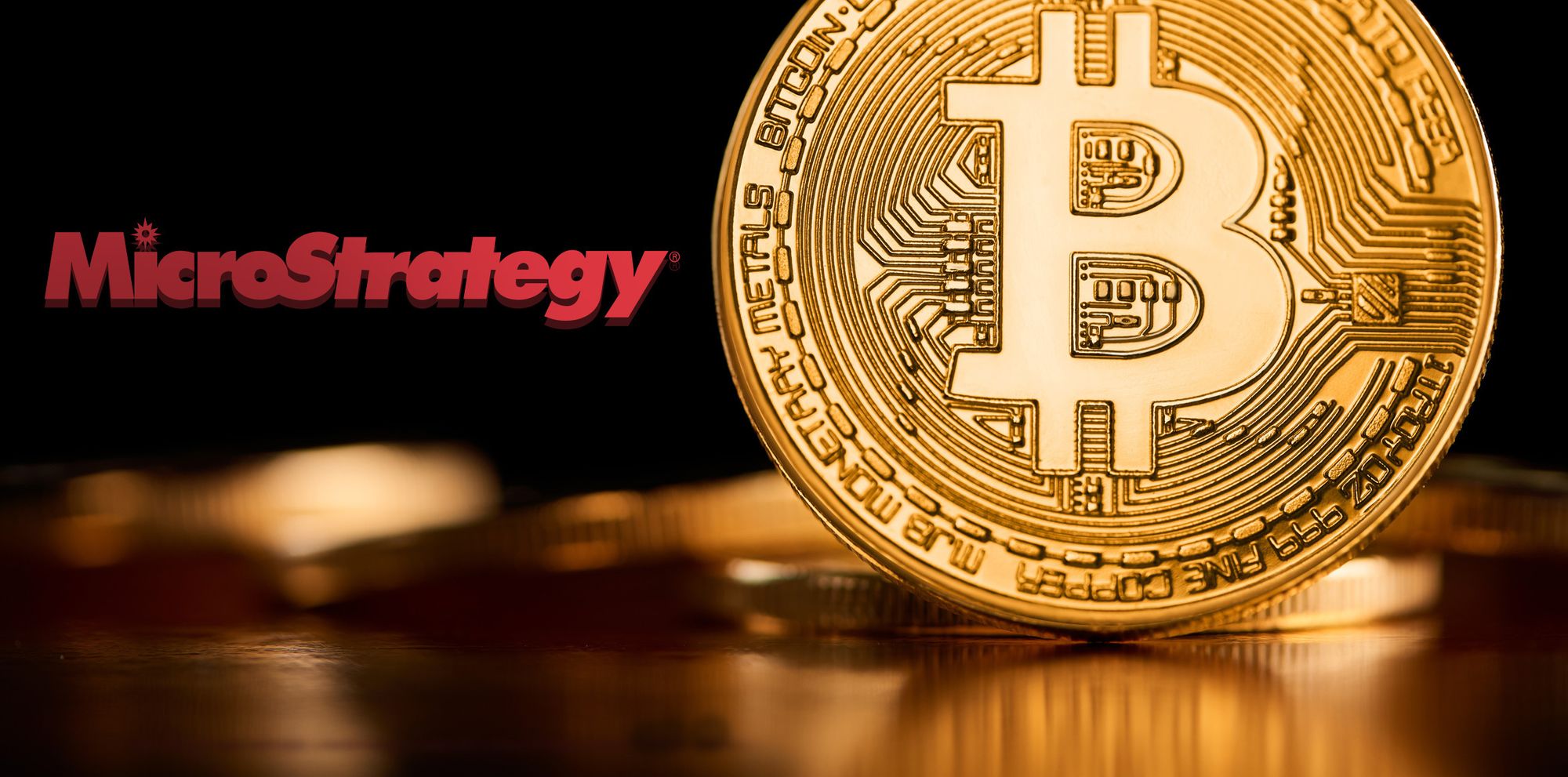MicroStrategy’s Bold Bitcoin Strategy Powers 1,620% Stock Surge
16.10.2024 16:00 1 min. read Alexander Zdravkov
MicroStrategy has emerged as a top performer in the S&P 500, largely driven by its aggressive Bitcoin investment strategy.
The company’s stock has soared 1,620% since it began using Bitcoin as its primary reserve asset in August 2020, far outpacing the gains of both the cryptocurrency itself and prominent tech stocks like Nvidia.
The firm’s dramatic rise traces back to CEO Michael Saylor’s bold decision to shift significant cash reserves into Bitcoin. Today, MicroStrategy owns 252,220 BTC, worth over $15 billion, making up about 1.2% of the total supply.
Saylor’s approach of using a mix of debt and equity to fund these purchases has helped the company expand its holdings while the market sees potential value in owning MSTR shares over Bitcoin directly.
Despite these gains, concerns remain. The close correlation between MicroStrategy’s stock and Bitcoin’s price means any downturn in the cryptocurrency could significantly impact the company’s valuation. However, developments like the rise of Bitcoin ETFs and growing institutional interest in the digital asset may help cushion potential risks.
As Bitcoin recently traded around $67,058, MicroStrategy’s bold approach has cemented its place among market leaders. Still, the high stakes tied to a volatile asset make this strategy a double-edged sword for investors, offering both potential rewards and significant risks.
-
1
Bitcoin Enters new Discovery Phase as Profit-Taking Metrics rise and outflows dominate
06.07.2025 8:00 2 min. read -
2
U.S. Lawmakers Target El Salvador With Crypto Sanctions Plan
10.07.2025 15:00 2 min. read -
3
Strategy’s $60 Billion Bitcoin Portfolio Faces Mounting Risks, CryptoQuant Warns
10.07.2025 16:36 3 min. read -
4
Esports Giant Moves Into Bitcoin Mining
05.07.2025 13:00 2 min. read -
5
Bitcoin Dominance Nears Key Resistance — Is Altseason Coming Next?
13.07.2025 17:00 2 min. read
Societe Generale Backs Bitcoin and Ethereum ETP Expansion
French banking giant Societe Generale has entered the crypto space more directly, forming a strategic partnership with 21Shares.
Strategy Launches $2 Billion Raise to Buy More Bitcoin
MicroStrategy is doubling down on its Bitcoin strategy with a massive $2 billion fundraising move. Originally planned at $500 million, the company expanded its offering after seeing strong investor demand.
Arkham Intelligence: U.S. Government Holds at Least 198,000 BTC
The U.S. government now holds over 198,000 BTC, valued at approximately $23.5 billion, according to data from Arkham Intelligence.
FTX Sets Next Data for Creditor Distribution
FTX Trading Ltd. and the FTX Recovery Trust have announced August 15, 2025 as the official record date for their next round of distributions.
-
1
Bitcoin Enters new Discovery Phase as Profit-Taking Metrics rise and outflows dominate
06.07.2025 8:00 2 min. read -
2
U.S. Lawmakers Target El Salvador With Crypto Sanctions Plan
10.07.2025 15:00 2 min. read -
3
Strategy’s $60 Billion Bitcoin Portfolio Faces Mounting Risks, CryptoQuant Warns
10.07.2025 16:36 3 min. read -
4
Esports Giant Moves Into Bitcoin Mining
05.07.2025 13:00 2 min. read -
5
Bitcoin Dominance Nears Key Resistance — Is Altseason Coming Next?
13.07.2025 17:00 2 min. read


